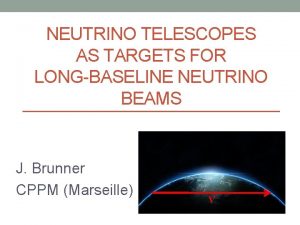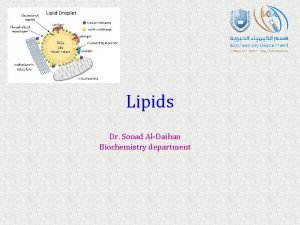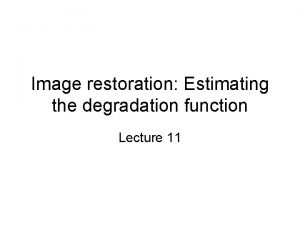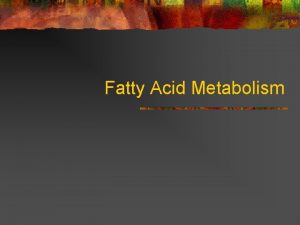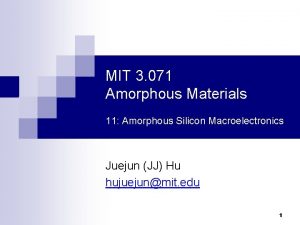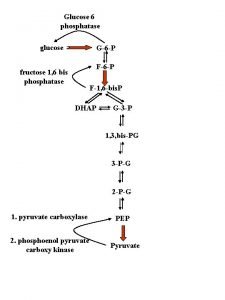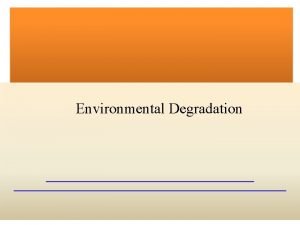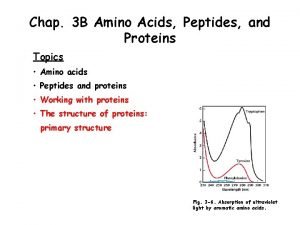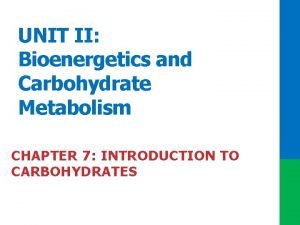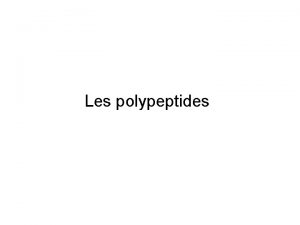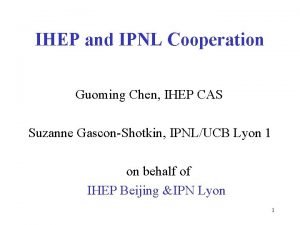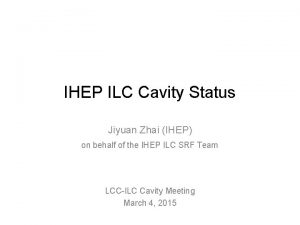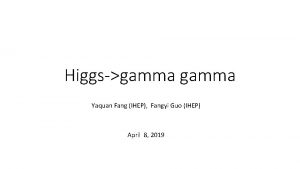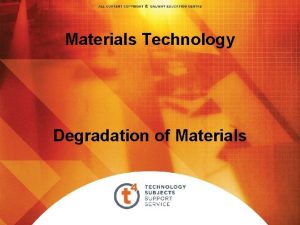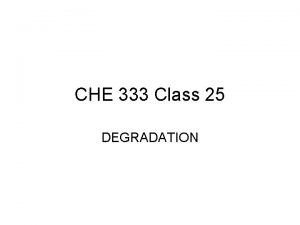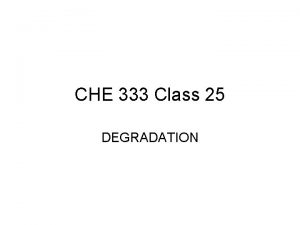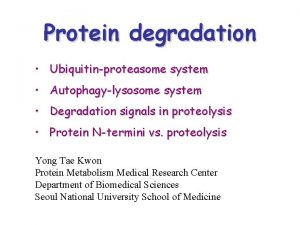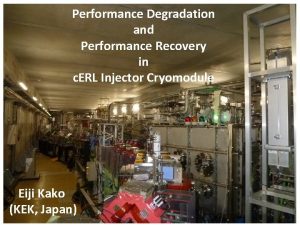4 7 June 2018 IHEP Performance degradation of


















- Slides: 18

4 -7 June 2018 IHEP Performance degradation of helium refrigerator for cryogenic hydrogen system at J-PARC T. Aso, M. Teshigawara, S. Hasegawa, H. Muto, K. Aoyagi, H. Takada J-PARC Center Japan Atomic Energy Agency Just dismantled ADS

Oil based troubles in other facilities ・Large amount of oil released from compressor ・Accumulated oil inside heat exchanger (1) RIKEN: Cryogenic cooling system for SRC Capacity: 620 W@4. 5 K He flow: 140 g/sec ・Degradation of cooling power from 2005 It works well up to now (2) CERN: CMS refrigerator Capacity: 1. 5 k. W@4. 5 K He flow: 220 g/sec Commissioning in 2004 ・Amount of oil : ~ 2 kg ・Concentration : 750 ppm (AIP Conf. Proc. 1218, pp. 1410 -1417, 2010) 2015 degradation ・Amount of oil : 375 g ・Concentration : <10 ppb (Cryo-Ops 2016) In our case, it occurred even small amount of oil accumulation. 2

Contents 1. Outline of J-PARC 2. Outline of cryogenic hydrogen system 3. Performance degradation of refrigerator 4. Investigations of cause 5. Measures for performance degradation 6. Consideration 7. Present status of pressure drop 8. Summary 3

1. Outline of high-intensity neutron source at J-PARC (Japan Proton Accelerator Research Complex) Pacific ocean 50 Ge. V Synchrotron 3 Ge. V Synchrotron Linac Hadron Experimental Facility Materials and Life Science Experimental Facility 300 m Neutrino Beams to Kamioka Operation started since 2008 Current beam power is 500 k. W Spallation neutron source → Cold neutron using by refrigerator 4

2. Outline of cryogenic hydrogen system Cascade refrigeration system of helium and hydrogen for cooling neutrons Hydrogen circulation system Helium refrigerator Cold box circulation ・Operation 60 -100 days/cycle, Current. Hydrogen operating time : 50, 000 system hrs. Helium period: refrigerator Pressure 1. 5 MPa ・ 1 st ADS : Replacement at 12, 000 hrs. Pressure 1. 6 MPa Temperature inlet) 18 K Flow : rate 270 g/s at 18, 000 hrs. (moderator ・ 2 nd ADS Pressure drop appeared since 2015. Capacity → Performance 6 k. W degradation at 17 K (moderator outlet) Flow rate 21 K 180 g/s 5

3. Performance degradation of refrigerator Heat exchangers ΔP 1 Oct. 2015 Nov. 2015 Apr. 2015 Mar. 2015 Apr. 2014 Feb. 2015 Jan. 2015 ADS ΔP 2 Oct. 2015 Nov. 2014 Apr. 2015 Nov. 2014年 Feb. 2015 Jan. 2015 Nov. 2015 Feb. 2015 Jan. 2015 ・Pressure drop of ADS was 7 -8 times larger than ・Outlet temperature of HX 2 was also increased. Nov. 2015 Oct. 2015 ・Pressure drop increased with every operation. one of heat exchangers. Mar. 2015 Apr. 2014 HX 2 outlet temperature Since 2015, Finally, liquid hydrogen could not be generated. ・Pressure drop was reset by warm-up T Apr. 2015 Nov. 2014 Mar. 2015 Apr. 2014 6

4. Investigations of cause (1) Impurity measurements by gas chromatograph Impurity concentration (ppm) 2015. 1 Q-mass (2015. 11) Heat exchanger (HX 1+HX 2) almost < 1 ppm ADS: N 2 = 10 -100 ppm →within design value ADS Operating time of refrigerator (hrs) Remaining N 2 of active charcoal regeneration process 7

4. Investigations of cause (2) Impurity measurements by Q-mass 2016. 1 After operation, measured area partitioned by valves Pressure (Pa) He ADS HX LP line Background H 2 O Almost background → No impurity N 2 Mass to charge ratio (m/z, a. m. u. ) CO 2 8

4. Investigations of cause (3) Oil concentration measurement by cold trap ・Cold trap extraction using liquid N 2 ・Infrared spectroscopy analysis Oil concentration (ppb) 2016 He flow rate ● 200 g/s ○ 270 g/s 2017 2018 At outlet of OS-5 Operating time of compressor (hrs) ・ ~10 ppb ・ Equivalent to design value 9

4. Investigations of cause (4) Observation of inlet of HX-1 No oil and contamination Fiber scope with ultra violet light 10

5. Measures for performance degradation From results of the cause investigation, ・No impurities ・Low oil concentration (~10 ppb) However, measures for oil accumulation (1) Cleaning of inside heat exchangers (2) ADS replacement Heat exchanger removal from cold box, and cleaning by Freon 11 Replacement work in cold box

Measure of accumulated oil inside heat exchangers ・Circulation cleaning of Freon (AK-225 G, 480 litters) ・Target:No. 1 and 2 heat exchangers ・Non-volatile residue HX-3 HX-1 HX-2 0. 18 g/350 m. L(AK-225 G) ・Total oil collection: 95. 1 g

Inlet Activated charcoal Outlet Felt ・Both sides of charcoal to hold it ・High siliceous glass fiber (12 mm thickness) ・ 8 layer laminated ・ Surface (3 mmt) of upper felt was yellowed ・ Oil was accumulated in membranous form Pressure drop ( Oil freezes and disturbs He flow …) Just after dismantled ADS (He inlet side) 13

Oil distribution in ADS Area Oil content (wt%) Oil content (g) 1 14± 0. 14 17. 7 2 8. 8± 0. 20 11. 1 3 6. 7± 0. 31 8. 5 4 4. 4± 0. 01 5. 6 5 0. 99± 0. 03 1. 3 6 0. 63± 0. 04 7 0. 39± 0. 04 8 0. 09 layer He inlet Upstream Felt Charcoal Activated charcoal Downstream Felt ・ADS accumulated oil : 48. 0 g ・HX(95 g) + ADS(48 g) = 143 g Comparable: ~10 ppb x 20000 hr He outlet Felt played a role of filter Example of RIKEN (g) 45. 6 0. 04 5. 1 0. 8 0. 020± 0. 003 0. 8 Mid. 0. 014± 0. 002 0. 6 Lo. 0. 016± 0. 001 0. 7 0. 16 0. 2 0. 04 0. 05 3 <0. 01 4 <0. 01 5 <0. 01 6 <0. 01 7 <0. 01 8 <0. 01 95% of oil was trapped at upstream felt 2 First ADS (g) High siliceous 0. 5 glass fiber 0. 1 Up. 1 Total (g) Total Rock wool 2. 1 - 111. 9 0. 3 - 0. 8 48. 0 14

Flowing element test of the felt Element test was carried out to confirm the pressure drop due to the accumulated oil on the felt. ・Case: with/without oil case ・Flow; Nitrogen gas Temperature: 150 K Pressure: 0. 3 MPa Mass flow rate: 8. 3 -14. 8 Nm 3/h ・Cooling by liquid nitrogen With oil case increased differential pressure.

8. Consideration ・ ADS : Pressure drop occurred due to accumulated oil on surface of felt ・ HX : ・ Pressure drop at ADS was 7 -8 times larger than that at HX. ・ Pressure drops occurred same time at ADS and HX. → We don’t understand that large pressure drop of ADS affected on the performance of the HX. 16

7. Present status of pressure drop HX 1+HX 2 2015. 10 -11 2012. 4 -6 Pressure drop (k. Pa) 2017. 10 -12 ADS 2015. 10 -11 2018. 1 - -> July Performance has been recovered ・No pressure drop increase ・No performance degradation 2012. 4 -6 2017. 10 -12 Operating time (days) 2018. 1 - -> July 17

9. Summary l Although amount of oil accumulation at ADS and HX was small, (Oil concentration in He was within design value, ) performance degradation of refrigerator was occurred. l Cause of large pressure drop at ADS was due to oil on surface of felt. → Improvement of ADS by changing felt l It’s under consideration whether large pressure drop at ADS affected performance degradation of HX. l We are still making effort to investigate the cause. Thank you for your attention 18
 Ihep
Ihep Ihep housing
Ihep housing Protvino
Protvino June 21 2019 geometry regents answers
June 21 2019 geometry regents answers Checkpoint
Checkpoint Cxc results 2018 may/june
Cxc results 2018 may/june Flax exam
Flax exam January 2018 chemistry regents
January 2018 chemistry regents Tag degradation
Tag degradation Conclusion of environmental degradation
Conclusion of environmental degradation Estimation of degradation function
Estimation of degradation function Potential induced degradation
Potential induced degradation Metabolismn
Metabolismn Light induced degradation
Light induced degradation Glucose 6 phosphatase
Glucose 6 phosphatase How environmental degradation occurs
How environmental degradation occurs Edman degradation steps
Edman degradation steps Abnormal degradation of disaccharides
Abnormal degradation of disaccharides Edman degradation
Edman degradation
